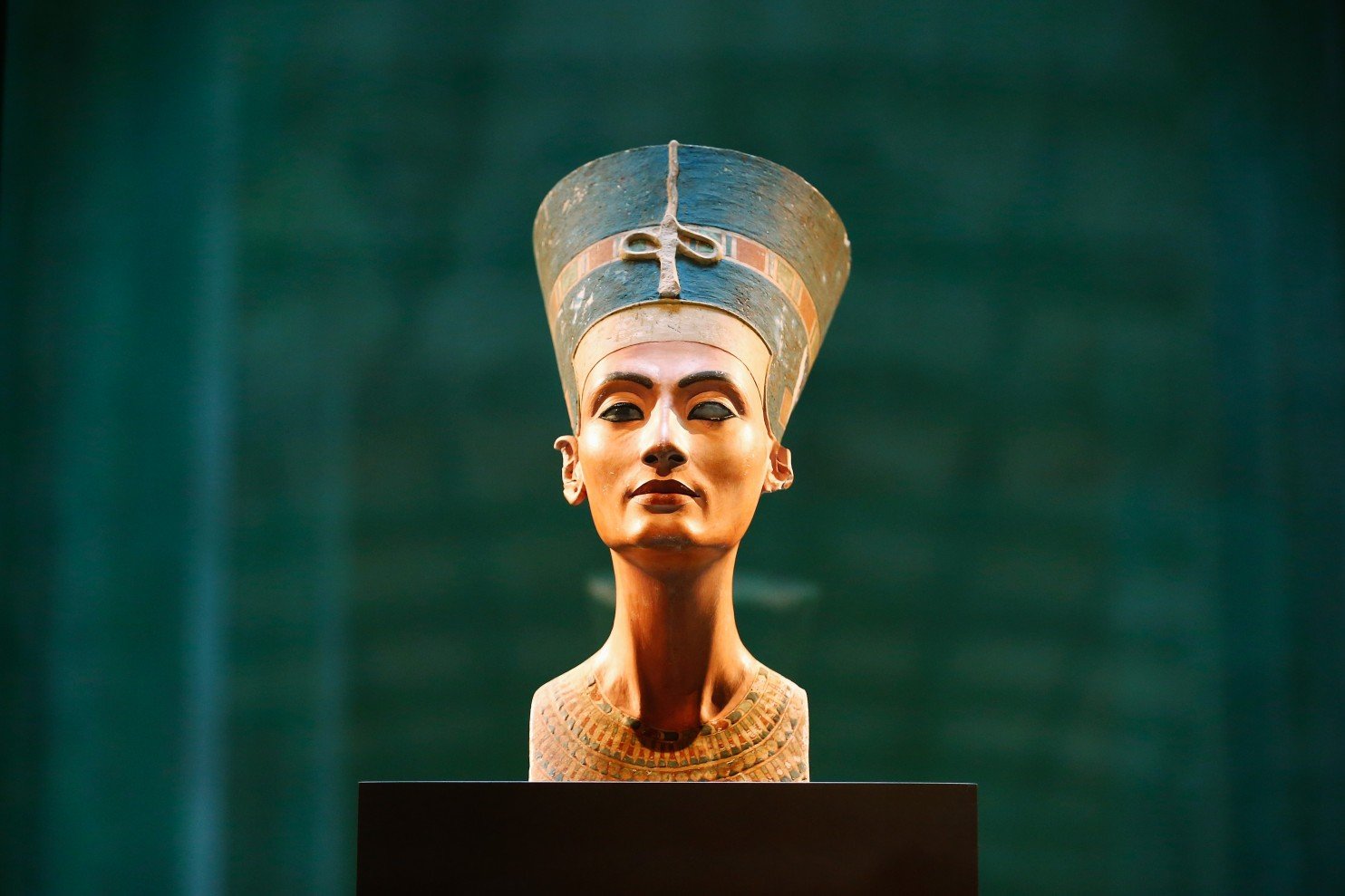
The Nefertiti bust displayed at the Atles Museum in Berlin.
Photo: Sean Gallup/Getty Images.
The iconic bust of Nefertiti, one of Egypt’s greatest treasures, has been repatriated to its native land—sort of. The sculpture belongs to the Egyptian Museum of Berlin, but artists Nora Al-Badri and Jan Nikolai Nelles believe it should be repatriated to its native land.
In an act of protest, the artists smuggled Microsoft Kinect scanners hidden under their scarves into Berlin’s Neues Museum last October, and clandestinely scanned the Egyptian queen over the course of five or six hours. “The Nefertiti Hack,” or “The Other Nefertiti,” as the pair have titled their artistic intervention, is available to download as a 3-D dataset.
“The museum audience was so focused on the bust… that no one noticed or realized what we were doing there,” Al-Badri told artnet News in an e-mail.
Nora Al-Badri and Jan Nikolai Nelles, “The Other Nefertiti” 3-D scan.
Photo: Nora Al-Badri and Jan Nikolai Nelles.
Although some on the Internet have questioned the pair’s ability to collect the necessary data through a glass display case, Al-Badri denied copying information from any previously-available scan, crediting “hackers” for skillfully interpreting their data. “There are always some funny theories swirling around,” she added.
The 3,000-year-old limestone and stucco statue was discovered by German archaeologists in 1912, and, like so many other antiquities, was claimed by a Western museum. Germany waited until 1924 to publicly exhibit the bust, and Egyptians immediately began calling for its return.
A recent Egyptian effort to create their own version of the Nefertiti bust was less than successful. Meanwhile, Germany has consistently denied loan requests from the African country’s cultural institutions.
The Nefertiti bust displayed in the exhibition “In the Light of Amarna” at the Neues Museum in Berlin.
Photo: Michael Sohn/AFP/Getty Images.
“The Berlin museum monopolizes the bust and thus continues an imperial practice, instead of allowing open access to Nefertiti, especially for Egyptians,” Nelles told the London Times.
Despite obvious interest in the bust, “no Egyptian museum will show the piece,”Al-Badri told artnet News. Instead, the art duo plans to display a gypsum replica of the 3-D print at the American University in Cairo this May. In a curious twist, Al-Badri told artnet News that they “buried the 3-D print in the desert,” as “a poetic counter-act to the excavation.” They will not reveal the location.
Nora Al-Badri and Jan Nikolai Nelles, “The Other Nefertiti” 3-D scan.
Photo: Nora Al-Badri and Jan Nikolai Nelles.
Through their actions, al-Badri and Nelles hope “to inspire a critical re-assessment of today’s conditions and to overcome the colonial notion of possession in Germany,” according to their artists’ statement.
Releasing 3-D scans can be a tricky business, when it comes to copyright law. In Sioux Falls, South Dakota, a local university insisted that a downloadable scan of their copy of Michelangelo’s Moses be removed from 3-D printing website Thingiverse, even though the work was in public domain. A scan of Marcel Duchamp‘s chess set based on archival photos was also taken down after objections from the artist’s estate.
The Nefertiti bust displayed at the Neues Museum in Berlin.
Photo: Andreas Rentz/Getty Images.
In recent years, many countries have made efforts to reclaim their cultural heritage from foreign institutions. Most notably, Greece recently tabled its long-running, Amal Almuddin-Clooney-backed crusade to pressure London’s British Museum to return the Parthenon marbles, carted back to England with questionable permission by Thomas Bruce, the seventh earl of Elgin, over 200 years ago.
Nefertiti’s regal beauty continues to capture the public imagination today as an iconic figure of ancient Egypt. As the wife and co-regent to the Pharaoh Akhenaten, she is believed to have briefly reigned over Egypt herself, under the name Neferneferuaten. There has been a great deal of excitement over recently-discovered evidence that suggests that her final resting place may be hidden in a secret chamber inside King Tut’s tomb.